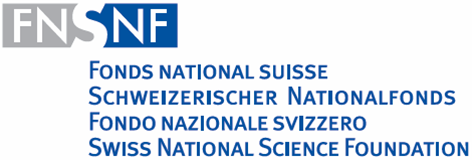Molekularna povezanost između homeostaze kolesterola, membranskog transporta i Alzheimerove bolesti

Glavni istraživač
Aberrant proteolytic cleavage of the amyloid precursor protein (APP) leading to increased formation/accumulation of b-amyloid peptide (Aβ) is considered a central event in the pahogenesis of Alzheimer's disease (AD). Although much has been known about the Aβ generation and its clearance, we still do not understand in great detail how Aβ metabolism is altered in the most common late-onset form of AD (LOAD) and what are the molecular trigger(s) that initiate these events. In this project we will test the hypothesis that cholesterol metabolism and membrane trafficking are tightly linked and that their dysregulation leads to Alzheimer's disease.
Aβ is generated within the amyloidogenic beta-secretase pathway through the cascade of cleavage events involving APP processing by proteases β- (BACE1) and γ-secretases. All three proteins are transmembrane proteins, suggesting that lipid enviroment within the membrane and membrane trafficking could modulate their function and, thus, Ab formation. Indeed, β-secretase cleavage of APP mainly occurs within the endocytic pathway, while retrieval of APP from endosomes to trans-Golgi-network via retromers seems protective by depleting APP from BACE1. Dysfunction of endosomes and retromers is an early pathological feature in AD, supporting that these two membrane trafficking routes play an important role in the pathogenesis of AD. In addition to Aβ, β-secretase APP processing pathway generates C-terminal APP fragments (CTFβ) which have previously shown to mediate endosome dysfunction (Jiang et al., 2010) and are responsible for memory impairment and neurotoxicity characteristic for AD (Neve et al., 1996). Substantial amount of evidence has shown that altered neuronal membrane cholesterol level and/or subcellular distribution is implicated in aberrant APP processing and Aβ/CTFβ formation. However, the results are somewhat contradictory and we still do not have a complete understanding on how cholesterol can influence AD pathogenesis.
In this project we will use a rare inherited cholesterol transport disorder Niemann-Pick type C (NPC), often referred as „childhood Alzheimer's“, to provide further evidence for the connection between APP metabolism, membrane misstrafficking and cholesterol homeostasis. Our approach is innovative as it utilizes an inherited single gene disorder to underpin the mechanism of the complex neurodegenerative diseases, such as AD.We will further examine the mechanistic details of an Alzheimer’s-like phenotype in NPC disease. In addition to Aβ peptide, which has been considered a central molecule in AD, in this project we will analyze how an increase in CTFβ contributes to AD and NPC pathogenesis. We speculate that increased levels of CTFβ, such as in AD and in NPC disease, regulate cholesterol homeostasis and modulate membrane trafficking within endocytic and/or retromer pathway, and, thus, contribute to the pathogenesis of AD and NPC disease. We will test the hypothesis that accumulation of APP-CTFβ, at least in part, responsible for membrane misstrafficking and altered cholesterol homeostasis in NPC disease. We will analyze whether Alzheimer's-like phenotype in NPC disease is due to retromer dysfunction, as observed in LOAD. In line with the recent finding that CTFβ binds cholesterol (Barrett et al., 2012) and that APP can control cholesterol homeostasis and turnover (Pierrot et al., 2013), we will analyze the role of accumulation of CTFβ on endosome/retromer pathway and cholesterol homeostasis, as well as the role of its G700XXXG704 cholesterol binding motif in this process.We believe that these studies will identify CTFβ as a signal transduction molecule involved in regulating cholesterol homeostasis and/or membrane trafficking and will provide clues on molecular targets for development of novel therapies against this devastating disorder.

